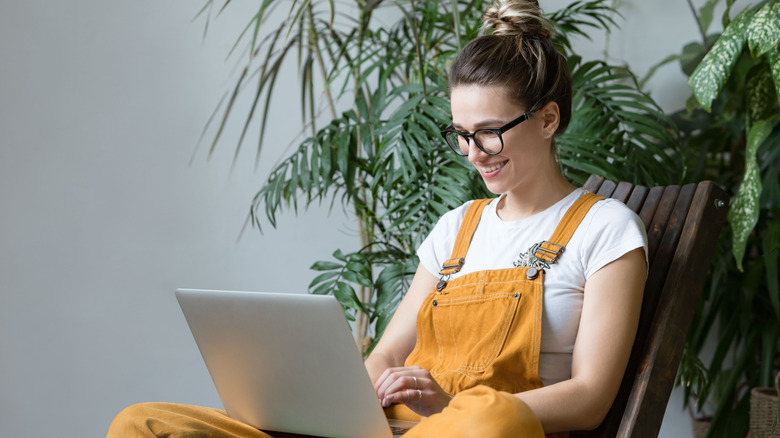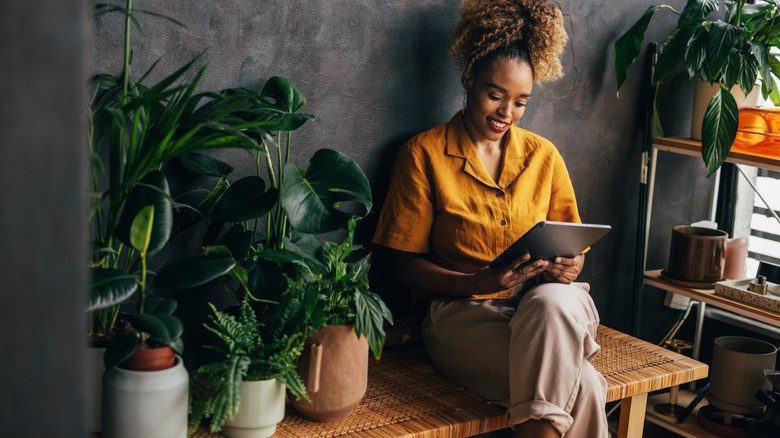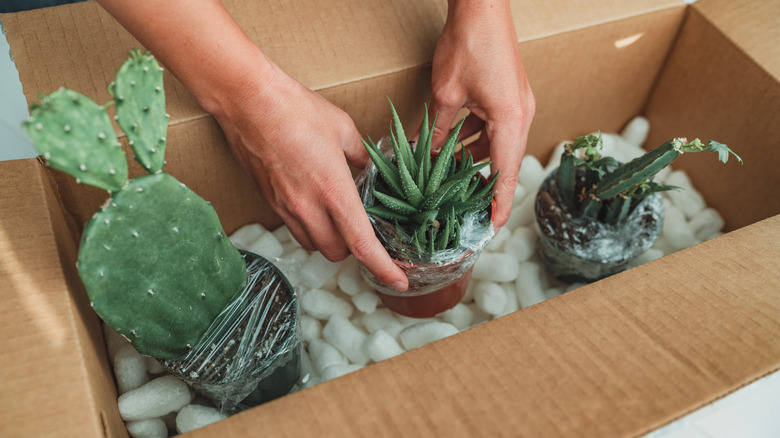Tips To Help You Confidently Shop For Houseplants Online
Shopping online is a popular way for plant lovers to add to a collection of houseplants. It's more convenient and affordable, and it makes exotic plants more accessible. Everything you need can be bought online too — like extra substrate, fertilizer, or pots. Shopping online for plants does have limitations, though. It's difficult to choose the best plants when you can't inspect them before you buy. Often, you don't get to choose the plant you get. There's also less control over how safely the plant will get from A to B, which can be unpredictable. So, we've gathered some helpful tips to help you more confidently shop for houseplants online.
The first thing you should do is research reputable online plant sellers. Individual sellers on platforms like eBay or Etsy can be hit or miss, but you can still find reputable sellers. One good sign is if the seller can identify the plant correctly and give accurate care instructions. You'll have to do your own plant research to verify the seller's information. The second thing is to try and minimize stress for the plant by reducing the time it will spend in transit. Sometimes, the best you can do after a stressful trip is to focus on the aftercare and getting plants settled in. There are a few things you can do to help your new plant acclimatize to its new home after arrival. So, let's take a look at how to shop for plants online in more detail.
How to shop online for houseplants
The best way to find reputable individual sellers online is by analyzing reviews from other customers. Go for sellers that specialize in selling live plants, with high numbers of sales, as they are more likely to have better experience providing careful packaging to keep your plants safe in transit. Sellers with high ratings and plenty of positive feedback will want to maintain their reputation and are much more likely to offer better customer service. Watch out for fake reviews, though. Make sure they have plenty of specifics included. For consistently high-quality products, professional packaging, and excellent customer service, you can't go wrong by shopping with a well-known, reputable online plant retailer, especially when they have a good returns policy.
It's also important to consider where the plants are being shipped from. Shorter distances give a better chance for plants to arrive in a healthy condition. Long journeys or delayed deliveries may result in plants being exposed to more stress than is needed — including extreme temperatures, rough handling, and being enclosed in a dark box with no airflow or water for an extended period. Look for opportunities to pay extra for expedited shipping so you know exactly when your parcel will arrive and can arrange to have someone receive it.
What to do when your plants arrive when ordering online
Upon arrival, immediately unpack your plants, carefully removing all packaging plus any dead or broken parts of the plant. You can also check to see if damaged stems can be kept for propagation, which might help to make expected minor casualties more bearable. With bare-rooted plants, which are plants that arrive without pots or substrate, you can soak the roots in warm water for an hour before planting to help rehydrate them. Be sure to cut off anything mushy to minimize the risk of root rot.
Plants will already have experienced some level of shock during transit, so it's a good idea to hold off transplanting potted plants straight away. Just water and place it in a dry spot with plenty of light away from other plants.
Perhaps the most important thing to do when you receive new plants is to quarantine them to protect your established houseplant collection from potential cross-contamination of pests or diseases. You can do this by spraying the plant thoroughly with neem oil and placing it in a different room for a couple of weeks. Then take some time to observe for pests and diseases, and treat them if needed before transplanting into their permanent pots and substrate.


